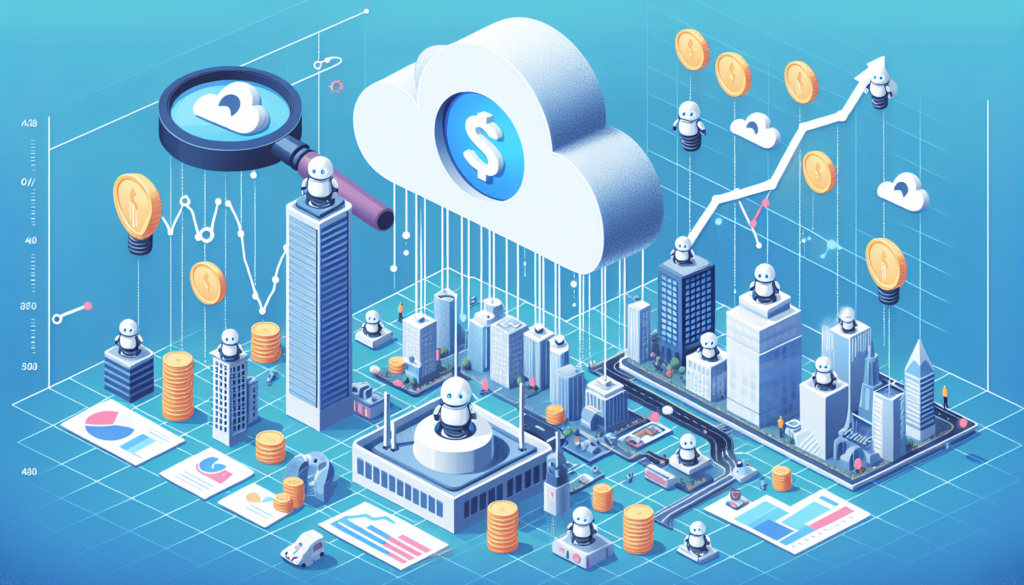
Exploring Cloud Computing in the Tech Industry: Innovations Transforming 2024-Cloud computing has become the backbone of modern business, enabling companies to store, manage, and process data at scale, all while offering incredible flexibility, scalability, and cost-efficiency. As the tech industry continues to evolve, cloud computing is taking on a more prominent role, with innovations that are transforming the way businesses operate, innovate, and interact with customers. In 2024, we are witnessing several key cloud computing trends and advancements that promise to reshape industries across the board. From AI-powered cloud services to edge computing, here’s how cloud computing is driving innovation in the tech industry.
1. AI-Driven Cloud Services: Smarter and More Efficient

Artificial Intelligence (AI) and cloud computing are a perfect match, and in 2024, we’re seeing a significant surge in AI-powered cloud services. Tech giants like Google Cloud, AWS, and Microsoft Azure are integrating AI and machine learning (ML) capabilities directly into their cloud offerings, allowing businesses to harness these powerful tools without needing to invest in expensive, on-premise infrastructure.
In 2024, AI-driven cloud services are enabling companies to perform tasks like predictive analytics, natural language processing (NLP), and computer vision with minimal effort. For example, businesses can leverage AI-powered analytics tools to make smarter, data-driven decisions by analyzing vast amounts of unstructured data. Cloud-based ML algorithms are also helping automate tasks like data processing, customer support (via chatbots), and fraud detection, improving both operational efficiency and customer experience.
For tech companies, these AI-powered cloud tools are providing new avenues for innovation, allowing them to integrate cutting-edge capabilities into their products and services with ease. As AI continues to evolve, expect these cloud computing innovations to unlock even more potential for businesses across various sectors, from retail and healthcare to finance and manufacturing.
2. Serverless Computing: Simplifying Operations and Reducing Costs
Serverless computing is gaining momentum as one of the most innovative trends in cloud computing. Unlike traditional cloud infrastructure models where businesses must manage servers, serverless computing eliminates the need for developers to worry about the underlying hardware. With serverless platforms, businesses only pay for the resources they actually use, reducing overhead and improving cost-efficiency.
In 2024, serverless computing is transforming how businesses build and scale applications. By offloading the management of infrastructure to cloud providers, companies can focus solely on writing code and developing features, while the cloud provider automatically handles scaling and resource allocation. This model is particularly attractive for startups, small businesses, and enterprises looking to build applications without having to invest heavily in IT infrastructure.
The benefits of serverless computing go beyond cost savings. Developers can deploy applications faster, scale them with ease, and integrate them seamlessly with other cloud services, such as databases, storage, and AI tools. In 2024, more businesses are adopting serverless models to streamline their operations, reduce complexity, and deliver innovative solutions to their customers. (Read More: The Benefits of Technology in Education: Enhancing Learning Experiences in 2024)
3. Edge Computing: Bringing Data Processing Closer to the Source

Edge computing, a concept that complements cloud computing, is rapidly gaining traction in 2024. Essentially, edge computing involves processing data closer to where it’s generated—at the “edge” of the network—rather than relying solely on a centralized cloud data center. This reduces latency, speeds up data processing, and enables real-time decision-making, which is critical for applications like autonomous vehicles, IoT devices, and remote monitoring systems.
Tech companies are increasingly using edge computing to enhance cloud services and reduce the burden on centralized servers. For example, in the manufacturing sector, edge computing allows for the real-time analysis of data from IoT sensors on the factory floor, which can immediately trigger actions like adjusting production lines or identifying potential issues before they become problems.
In 2024, the combination of cloud computing and edge computing is helping businesses innovate faster and provide more efficient services. Cloud providers are integrating edge computing capabilities into their offerings, allowing companies to process sensitive data locally while still leveraging the power and scalability of the cloud. This hybrid approach offers enhanced flexibility and performance, making it an exciting trend for industries like healthcare, transportation, and smart cities. (Read More: The Future of AI in Science and Technology: Key Developments to Watch)
4. Cloud Security: Enhanced Protection for the Digital Age
As more businesses migrate to the cloud, the importance of cloud security has never been greater. In 2024, cloud providers are ramping up their security offerings to address the increasing sophistication of cyber threats. With the rise of data breaches, ransomware attacks, and other forms of cybercrime, businesses are demanding more robust security features from their cloud providers.
Cloud security innovations in 2024 are focused on strengthening data protection and improving threat detection. Multi-factor authentication (MFA), encryption, identity and access management (IAM), and zero-trust security models are becoming standard practices for businesses that want to secure their cloud environments. Additionally, AI and machine learning are being used to detect unusual activity in real time, helping prevent data breaches before they occur.
Cloud providers are also focusing on compliance with various global regulations, such as GDPR and CCPA, to ensure businesses can meet privacy and data protection requirements. In a world where cybersecurity is a top priority, cloud computing is evolving to offer more advanced, automated, and reliable security solutions, helping businesses protect sensitive data and build customer trust. (Read More: The Future of Technology Drawing: AI-Powered Solutions for Creative Industries)
5. Cloud-Native Development: Accelerating Innovation and Agility

Cloud-native development is another trend that is transforming the tech industry in 2024. Cloud-native applications are built to take full advantage of cloud environments, making them more scalable, resilient, and flexible than traditional software. By leveraging microservices, containers, and Kubernetes, cloud-native development allows businesses to rapidly develop, test, and deploy new applications without the limitations of legacy infrastructure.
This approach is particularly beneficial for businesses that need to be agile and responsive in a fast-moving digital landscape. Cloud-native development enables companies to release updates and features more quickly, allowing them to stay ahead of the competition. With the rise of DevOps practices and continuous integration/continuous delivery (CI/CD) pipelines, businesses can streamline their development processes, improving collaboration between developers, operations, and security teams.
In 2024, more businesses are adopting cloud-native practices as they look to innovate faster and deliver better customer experiences. Cloud-native development offers the flexibility to scale applications on-demand, making it easier for businesses to meet changing market needs and optimize their digital transformation strategies.
Conclusion: Cloud Computing as the Key to Innovation in 2024
Cloud computing continues to be a transformative force in the tech industry, with innovations in AI, serverless computing, edge computing, security, and cloud-native development reshaping how businesses operate and innovate. As we move through 2024, businesses that embrace these cloud computing trends will be better equipped to scale, streamline operations, and create new opportunities for growth.
For companies looking to stay competitive in an increasingly digital world, adopting these cutting-edge cloud technologies is essential. The cloud is not just a tool for storing data anymore—it’s a platform for building smarter, more efficient, and more secure solutions that drive business success. Whether it’s through AI-driven analytics, real-time data processing at the edge, or building cloud-native applications, cloud computing is paving the way for the next generation of technological innovation.






1 thought on “Exploring Cloud Computing in the Tech Industry: Innovations Transforming 2024”